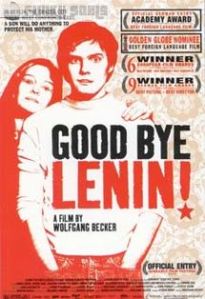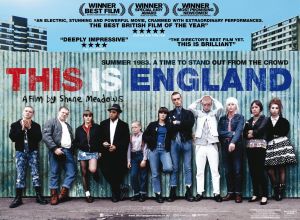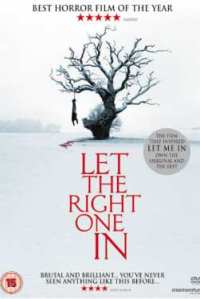Actors bring a film or programme to life with their performances of the characters. A lot of different factors influence how a character comes across on screen. One of them is how the character is written in the script. This is the beginning of the creation of a character, and is something for the actor to build on. The actual performance of the character is important, as it shows how the actor has agreed with the director to portray the character. Character conventions also play a part, as viewers will have expectations of what a character will be like. The character could follow or break a particular stereotype, so it would be interesting for viewers to see what they do. Background knowledge about a particular actor could also influence how an audience perceives their character. An actor could be typecast a lot, so the audience would know what to expect of their character when they see the film.
Additionally, there is a significant difference between the portrayal of a character on TV and in film. On TV, a character can gradually be revealed over the course of a series as the audience would be shown new aspects about them in each new episode. But in films the director has far less time to portray a character, so any character changes would be more dramatic and sudden. The character would undergo a transformation and gain self-knowledge throughout the film in a shorter time than TV.
In the book Engaging Characters – Fiction, Emotion and the Cinema (Smith 1995), three steps are introduced to creating a response from characters. One of them is recognition, which is “the spectator’s construction of character: the perception of a set of textual elements”(Smith 1995: 82), the act of turning what we see on screen into something we understand. Alignment is another, when “spectators are placed in relation to characters in terms of access to their actions, and to what they know and feel” (Smith 1995: 83), gaining access into the character’s world and seeing things from the character’s perspective. And allegiance is “the moral evaluation of characters by the spectator” (Smith 1995: 84), making certain judgements as to a character’s moral outlook of the world.
More basic information can also create a character, such as their name, key relationships with other characters, their back story, goals and desires, and their function within the narrative of the text. It is interesting seeing how much of a character can be created from the first episode of a series, for example in Breaking Bad (Gilligan 2008), we see the main character Walt undergo a huge change in his life which is what the series is based on.

He learns that he has cancer, so he begins developing drugs with a former pupil, Jesse, to make more money for his family. His backstory is that he’s lived the same mundane, stressful life, so with the news of his cancer he wants to make more money, and perhaps also look for more fun and excitement. His key relationship with Jesse, his former student, drives the narrative as the whole series is based on them being partners in drug-dealing from this first episode. Smith’s three steps of creating a response from characters can also be applied. He can be easily recognised as a character, as he’s originally an ordinary man trying to provide for his family and also working in a school, family and school being things everyone can identify with. We can align with his point of view, seeing how he has money problems with his family, and being told that he doesn’t have long left to live after being diagnosed with cancer leads to him being more impulsive, and so he begins making drugs as a result of these. And we see his moral outlook on the world – he cares greatly for his family, so he’d even illegally make drugs and risk getting arrested to provide for them.
Jesse is another protagonist in Breaking Bad. His key relationship with his former teacher Walt is the foundation for the whole series, which is established from the first episode. We learn about his backstory and goals from it, that Walt failed Jesse in chemistry years ago and that he only agrees to work with him because he blackmailed him into it. He also says that he makes drugs for the money. He can be recognised as a criminal, a rebel, which isn’t something everyone can identify with. This means that it can be interesting for an audience to see things from his perspective, as they might not be used to his alignment. And he’s a criminal because he makes a living from selling and using drugs, which again aren’t morals that everyone agrees with, but makes him a more unusual character to watch.
In Gavin and Stacey (Gernon 2008), the characters’ relationships are the narrative of the series.

About a young couple and their two families, we learn a lot about them just from the first episode like Breaking Bad. Gavin lives in Essex with his mum and dad, and grew up with Smithy, his best friend. Stacey lives in Barry, South Wales with her mum, and is best friends with Nessa. They often spoke on the phone at work, and agreed to meet in London with their friends, and end up being in a relationship. Their relationship is key to the series, as it brings their two families together and is the basis for the narrative. They have the same goals, to meet each other and start a relationship, which ends up being successful. The themes of love and relationships are widely recognised and relatable, and we get to see the events from both Gavin’s and Stacey’s perspectives, seeing how much the date means to the both of them and how much they want it to work. And we see how Gavin and Stacey have different morals to their friends i.e. about meeting people from the others’ cultural background. Gavin and Stacey are open-minded, but their friends mock the culture the others are from, especially Smithy, which is used to comic effect in the episode.
Bibliography:
Gernon, C., 2008. “Gavin & Stacey” Episode #1.1 (TV episode 2007), Available at: http://www.imdb.com/title/tt0921216/.
Gilligan, V., 2008. “Breaking Bad” Pilot (TV episode 2008), Available at: http://www.imdb.com/title/tt0959621/.
Smith, M., 1995. Engaging characters: fiction, emotion, and the cinema, Oxford : New York: Clarendon Press ; Oxford University Press.
















